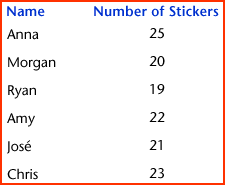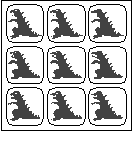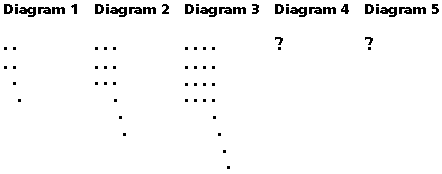Quiz
1. Which student has 3 more stickers than Morgan and 2 less stickers than Anna?
2. The amount of water in a full bathtub is BEST measured in:
3. 
Find the missing number that makes the sentence true.
4. 
Margarita brought a sheet of nine stickers to school. At recess, she shared some with her friends, so that she has only 2/9 of the stickers left. How many stickers did she give to her friends?
5. 
Alex read his new book for 1 hour and then used a bookmark to mark his place. About how much longer will it take Alex to finish reading his book if he continues at this pace?
6. 
How many points will be in Diagram 5?
1. Which student has 3 more stickers than Morgan and 2 less stickers than Anna?
Chris
2. The amount of water in a full bathtub is BEST measured in:
Gallons
3. 
Find the missing number that makes the sentence true.
60
4. 
Margarita brought a sheet of nine stickers to school. At recess, she shared some with her friends, so that she has only 2/9 of the stickers left. How many stickers did she give to her friends?
7
5. 
Alex read his new book for 1 hour and then used a bookmark to mark his place. About how much longer will it take Alex to finish reading his book if he continues at this pace?
2 hours
6. 
How many points will be in Diagram 5?
42
Better head back to school.
You're a fraction of the way there.
You have our undivided attention!